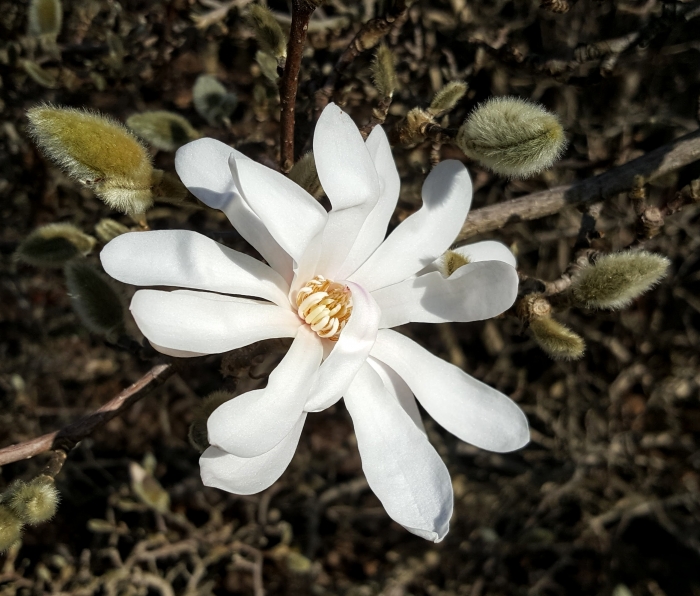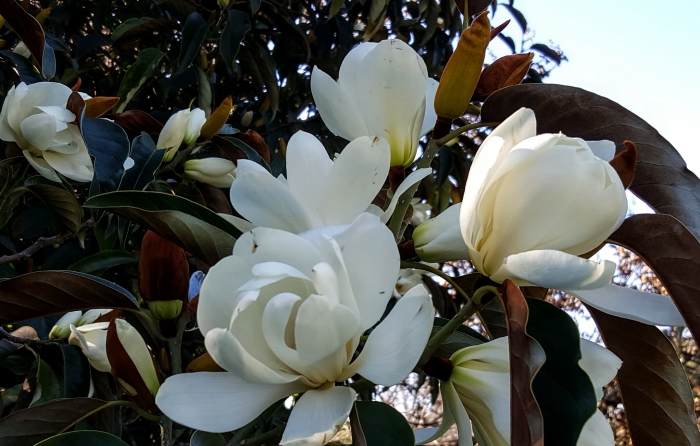
The last month of winter is here and I’m writing this on a stunning day of blue sky and sunshine. A quick tour of the Gardens confirms that the deciduous magnolia ‘s and their family relatives such as the evergreen sweet magnolia or Michelia doltsopa are just starting to do their stuff and burst out of bud and into full sweet flower. The flowers have a stunning perfume which is similar to that of its immediate relative Magnolia champaca (formally Michelia champaca), that has been used as a base for some of the world’s most famous perfumes and oils. Also appearing is the star magnolia, Magnolia stellata showing off its small, delicate star flowers on bare silver skinned branches, a wonderful display that heralds the still yet to come spring.
There are good examples of all including the huge flowers of Campbell’s magnolia, Magnolia campbellii just below the visitors centre with the show likely to last for the next few weeks of August.
Another flowering feature are the wonderful hellebores, Helleborus hybrids, (image above), that greet you as you come in through our magnificent 1778 wrought iron front main gate on the Domain side of the Gardens. As you wander through the gates the pathway gardens on both sides are loaded with this hardy perennial showing off a range of pastel coloured flowers. They have been in flower for some months now, and as their common name may suggest, the “winter rose” have a flower somewhat similar to a single rose, but they are not related.
The flowers are interesting as unlike many other plants, what appears to be the flower petals are actually modified and coloured rear flower appendages known as sepals. These are tougher than petals and last longer. The petals in this instance have been reduced to small insignificant cup like structures that hold the nectary’s for pollinators. This is why the hellebores make such a show in the garden throughout the winter months.
They are easy grown plants and come in a variety of species, colours and forms. They love cooler moist locations under trees or in half day sun with organic mulches and are a fantastic complimentary under-planting to magnolia’s and sweet magnolias. Once established they will even self-sow themselves and you will be giving them away to your neighbours.



